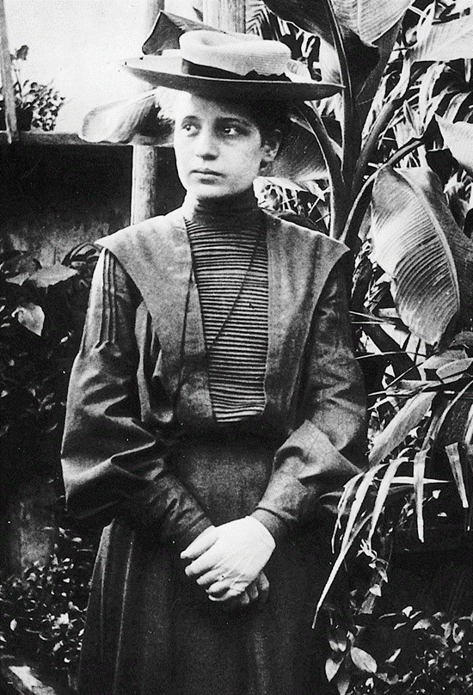In part 1 we counted down the top 10 female scientists places 10 through to 6. So here in part 2, we will finally discuss the top 5.
Just to recap, who we had last time;
9) Emilie du Chatalet, french physicist who made contributions to Newtonian mechanics, infrared radiation and the scientific method.
7) Jocelyn Bell, discoverer of pulsars who was contentiously overlooked for the 1974 Nobel Prize.
10) Mary Anning, geologist and palaeontologist extraordinaire. Responsible for many early important fossils.
8) Jane Goodall, one of the more famous on our list. She is responsible for much of what we know about chimpanzees.
6) Emmy Noether, all round genius whose primary field was mathematics but her work continues to guide modern theoretical physics.
We also mentioned some best of the rest who didn’t qualify for this list but are just as remarkable. Gertrude Elion, Barbara McLintoc, Rita Levi-Montachini and Tu Youyou who made remarkable contributions to medicine, Rachel Carson who was a prominent and early environmentalist and Ada Lovelace who helped write the first computer programme.
You can find part 1 by clicking here.
5) Dorothy Hodgkin

Dorothy Hodgkin was born on the 12th May 1910 in Cairo. She was British and was mostly educated in Britain but she spent much of her formative years in Egypt and Sudan where her father was a high ranking civil servant and archaeologist. She would go six months at a time without seeing her parents whilst schooling in Britain and living with her grandparents but she was briefly in a school run by her father in Sudan, he felt that if he was doing a good job he should be willing to give his own children the education he was providing for Sudanese children.
Moving into higher education she became only the third woman ever to receive a first class degree from Oxbridge, her subject was chemistry. Whilst studying for her PhD she first became aware of the potential of x-rays to discern the structure of molecules and she went on to become a pioneer of x-ray crystallography studies of biomolecules, that is to say using x-rays to find the structure of molecules such as penicillin and vitamin B12.
For this discovery she won the 1964 Nobel prize. This was not the only recognition she received however, she received many awards and medals from many countries for her work and was a pioneer for women in science in this country. She was the first woman to receive the order of merit since Florence nightingale, she became chancellor of Bristol university in 1970, was awarded the Lenin peace prize by the soviets, the Dimitrov prize by Bulgaria, the Austrian Decoration for science or art and she remains the only woman to have won the Copley medal in its 288 year history, awarded each year by the royal society to a scientist of outstanding.
Her discovery was so important because the function of molecule is determined by it’s structure and so understanding the structure helps us better understand how the molecules work with leads to improvements in medicine and treatment related to these molecules.
4) Chien-Shiung Wu

Wu is often described as the “Chinese Madame Curie” which as we will see later on is high praise indeed and certainly something she would be proud of as it was her discovery of Madame Curie’s biography in high school that helped peak her interest in science.
To give too much credit to Curie here would be wrong however (that will come later), because that would rather detract from the great scientist Wu was in her own right and the role her parents played in giving her the opportunities she deserved.
Wu was born in China in 1912, the same year the Chinese Republic was declared. Opportunities for women in the 400 years of the Qing dynasty that preceded the Chinese Republic were limited to say the least and there was a real prejudice against women being educated. Luckily her parents were political progressives and so they founded an primary school and Wu was one of their first students. By the age of 11 however she had completed everything that was available to her there so she had to move some 80 km away from home to go to a very prestigious secondary school. Whilst there she was so impressive that she was quickly admitted to the National Central University without even having to sit the normal entrance exams. Once she graduated however there was nowhere in China for her to pursue physics so she left for America aged just 24. She never saw her parents again. After Japan invaded China she did not hear from her parents for 8 years.
She established herself as a great and meticulous experimental physicist. If she had shown something to be true, it was true. With WWII waging across the world she was called up to the Manhattan Project. The only Chinese scientist to work on the project and one of only a few senior women. Wu completed crucial work on the Uranium enrichment and radiation detection. The culmination of Wu’s, among others, work was the completion of the atomic bomb.
Following the end of the war she was a world leader in radiation. That was not saying much however because very little was known about it. She was instrumental in the understanding of beta decay. Wu proved that the “fundamental law of parity” was in fact not true by devising and conducting an incredible series of experiments. Unfortunately, this was not her idea, she only proved that it was true and so despite doing almost all of the work she was overlooked for the Nobel Prize. Wu was however awarded many prizes in later life but she said of her discoveries, “these are moments of exaltation and ecstasy, a glimpse of this wonder can be the reward of a lifetime.”
This already was a far longer piece on Wu than I intended and I haven’t even mentioned her political activity both in China at University and in later life. Nor did I mention her contribution to Fermi or Feynman’s work. All worth researching. I almost feel bad for placing her 4th but says more about the other women on this list than it does about Wu. It is more of a joint first position really.
3) Lise Meitner

Lise Meitner was a nuclear physicist born in 1878 Vienna. She was the Aunt of physicist Otto Frisch, a strong scientific dynasty if ever there was one (the Thomsons and the Curies might also have something to say in that argument). Some consider her the most influential female physicist of the 20th century and she is often referred to as the mother of the atomic bomb but I’m we are going to see some themes that are all too familiar to us on this list.
At the time of her childhood, Austrian women were not allowed to attend college. Her family were able to send her for a private education however and she did eventually graduate from Vienna University, only the second woman to receive a doctorate.
Meitner worked with another physicist Otto Hahn for thirty years discovery numerous isotopes. Meitner discovered a radiationless transition in 1929. One might expect it to be called the Meitner effect, but no, nobody paid any real attention to it. Pierre Auger discovered it two years later and it is now known as the Auger effect. If only this was the last snub of her career, it was not even close to the last. In 1938, Nazi Germany annexed Austria. Meitner was Jewish and her colleges did little to shield her so she was forced to flee to Sweden. You would think a distinguished scientist such as Meitner would have been a high profile asset to the University of Stockholm but no. She was given a lab but not equipment, technical support, collaborators or even keys to the lab. So she began to collaborate with her nephew Otto Frisch. They coined the term “nuclear fission” and Meitner wrote a paper explaining the process of fission (which is the process of splitting an atom which releases a huge amount of energy). The alarm this paper caused led to the formation of the Manhattan project. Meitner was invited to join but declined, her nephew was a key player however. For her work Meitner became known as the “mother of the atomic bomb” despite never working on the project. When the 1944 Nobel Prize in Chemistry was awarded for the discovery of fission, Meitner was not mentioned. The award was instead given to Otto Hahn, not that he was undeserving of credit, but the omission of Meitner represented an all to familiar overlooking of a deserving female scientist.
2) Rosalind Franklin

Rosalind Franklin was born in 1920s England to a prominent Jewish family. So certainly she had the advantage of receiving a first class private education. What followed was a natural sciences degree from Cambridge, a PhD and a research fellowship in Paris where she became an accomplished X-ray crystallographer. So far, so remarkable. Especially when we consider the era in which she is living. She discovered the molecular structure of coal early in her career, a scientific achievement for sure but her crystallography would go one to produce two far more significant discoveries.
The first is very well known but Rosalind’s part in it is often overlooked – the structure of DNA. James Watson and Francis Crick were awarded the 1962 Nobel Prize for Medicine for the discovery. However, their work was based upon the Franklin’s photo 51 which was an image of this structure obtained through x-ray crystallography. Watson and Crick reached their conclusions using Franklin’s photo 51 and accompanying notes without her knowledge or permission.
We will never know whether Franklin’s omission was a result of sexism or scientific rivalry because the official and prevailing reason is that the Nobel committee do not award prizes posthumously, Franklin died aged just 37 of ovarian cancer, 4 years before the prize for her discovery was awarded. Equally, Watson and Crick didn’t do much to push credit towards Franklin.
Thankfully the same is not true for her second great discovery. Franklin along with her mentee Aaron Klug discovered the structure of RNA which proved instrumental in fighting polio. Klug did much to restore Franklin’s reputation after her death. He received a Nobel prize in chemistry for his work on the structure of viruses and Franklin would undoubtedly have been recognised with him if it weren’t for her death 24 years earlier.
1) Marie Curie

Perhaps uniquely on this list is a woman who was widely recognised for her work. This is a case of her work and legacy being so irrefutable that even the sexism of the day could not hold back the scientific force that was Madame Curie. As her achievements are not hidden an unknown like others on this list and because it would take a book to go into any detail I will just list some of the key points of her life.
She was born in Poland but travelled to Paris to pursue a scientific career that she couldn’t have in Poland. With her husband she discovered radioactivity (and she coined the term). This won her a Nobel prize in physics.
The Curies then went on to discover polonium (named for her native country) and radium. This secured her a second Nobel prize, this time in chemistry and this time alone (because her husband was killed by a house and cart before the prize was awarded).
In the world war she set up a mobile a radiology unit to travel to field hospitals. Under her direction investigations were started into the use of radioactivity as a cure for cancer. She founded the Curie Institutes in Paris and Warsaw for medical research.
Throughout her career she pioneered work on radiation however what was not apparent until far too late was it’s dangers. The radiation she’d been exposed to throughout her scientific and medical career caught up with her and aged 66 she died of aplastic anemia caused by radiation exposure.
Following her death, her legacy only grew. The Marie Curie Foundation was founded. A chemical element Curium was named for her. Her daughter carried on her legacy and won a Nobel Prize in chemistry herself. Curie’s scientific achievements and legacy are in no doubt then. Let us instead end on her character. Madame Curie did not patent any of her discoveries so that research could advance unhindered. Most of the Nobel Prize money she gifted away to friends, family, students and research institutions. She insisted that any monetary gifts or donations be made to associations she was affiliated with and not to her personally. And despite her impressive awards list, she frequently declined prizes and medals. Einstein said she was the only person who could not be corrupted by fame. Madame Curie remains the only person to win a Nobel prize in both physics and chemistry. She was the first woman to be buried in the Pantheon in Paris in their own right. Their are countless places named in her honour. Madame Curie does not need my acclaim then, but that does not mean she is not deserving of it. As indeed is every person on this list and many more besides.


Leave a comment